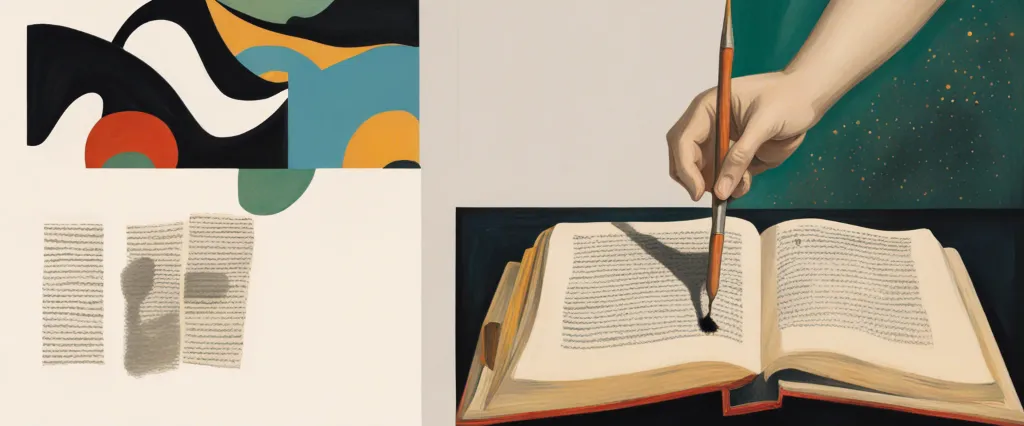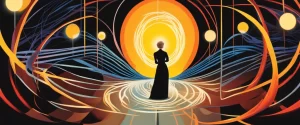
In the realm of art history, two influential books have stood the test of time, offering readers a deep dive into the captivating world of creative expression. E.H. Gombrich’s “The Story of Art” and H. Harvard Arnason’s “History of Modern Art” have remained highly regarded references for scholars and art enthusiasts alike. While both books share a common goal of unraveling the complex tapestry of human artistic achievement, each approaches this task with distinct perspectives and methodologies. As we embark on a comparative study of these two seminal texts, we will explore their content, structure, and critical reception, ultimately uncovering the unique ways in which Gombrich and Arnason contribute to our understanding of art history. Join us on this intellectual journey as we navigate the rich narratives woven within “The Story of Art” and “History of Modern Art,” shedding light on both their similarities and disparities, and ultimately seeking to answer the question: How do these two books shape and inform our perception of the art world?
Brief Summary of Two Books
The Story of Art by E.H. Gombrich
“The Story of Art” by E.H. Gombrich is a comprehensive and accessible overview of the history of art, tracing its origins from ancient times through to contemporary art. The book begins by introducing the reader to the basic elements of art, such as line, shape, and color, before delving into different periods and styles across various civilizations and cultures.
Gombrich covers a wide range of topics, including ancient Egyptian and Greek art, the Renaissance, Baroque, Rococo, and Neoclassical periods, as well as Asian and African art. He examines key artistic figures and movements, highlighting their contributions and impact on the development of art.
Throughout the book, Gombrich emphasizes the role of art as a reflection of society and culture. He explores how various historical events and shifts in perspective influenced artistic styles and themes. Gombrich also discusses the evolving relationship between art and religion, politics, and social change.
“The Story of Art” not only provides an overview of significant art movements and techniques but also explores the interconnectedness of various art forms, including painting, sculpture, architecture, and even photography. Gombrich’s writing style is engaging and accessible, making complex art concepts understandable for readers of all backgrounds.
Overall, “The Story of Art” is a highly regarded and widely studied book that offers a comprehensive introduction to the history of art while highlighting the beauty, creativity, and significance of human artistic expression throughout the ages.
History Of Modern Art by H. Harvard Arnason
“History of Modern Art” by H. Harvard Arnason is a comprehensive and authoritative overview of the development of modern art from the mid-19th century to the contemporary era. The book explores the various movements, styles, and artists that shaped the art world during this period, with a focus on Western art but also offering insights into global developments.
The book begins by examining the roots of modern art in the late 19th century, discussing the impact of historical events, industrialization, and social changes on artistic expression. It then delves into the major art movements of the 20th century, such as Impressionism, Post-Impressionism, Fauvism, Cubism, Dadaism, Surrealism, Abstract Expressionism, Pop Art, Minimalism, and Conceptual Art.
Throughout the book, Arnason presents insightful analyses of individual artworks and discusses the motivations and philosophies behind the artists’ creative choices. He explores how different movements challenged traditional artistic conventions and sought to redefine the very nature of art, often reflecting the cultural and political climate of their time.
Moreover, “History of Modern Art” also highlights the impact of important art exhibitions, galleries, and art movements in different regions, including Europe, the United States, Latin America, and Asia. It examines the contributions of renowned artists such as Van Gogh, Monet, Picasso, Matisse, Duchamp, Warhol, Pollock, and many others, shedding light on their innovative techniques and aesthetic theories.
The book concludes with an exploration of contemporary art, addressing the diverse and often experimental nature of recent artistic practices. It considers the growing importance of new media, technology, and globalization in shaping the art world and how artists today continue to push boundaries and challenge established norms.
Overall, “History of Modern Art” serves as an invaluable resource for art lovers, scholars, and students seeking a comprehensive understanding of the development, significance, and impact of modern art throughout history.
Comparison between Two Books

Similarities in art history
The books “The Story of Art” by E.H. Gombrich and “History Of Modern Art” by H. Harvard Arnason share several similarities in terms of their approach to art history. Both books aim to provide a comprehensive understanding of art throughout history and analyze the development of various art movements and styles. Let’s explore the similarities in more detail:
1. Chronological Approach: Both books follow a chronological approach, starting from ancient art and progressing through different periods up to the present day. They give readers a sense of how art evolved and changed over time, providing context for each artistic movement.
2. Comprehensive Coverage: Both books cover a wide range of art forms, including painting, sculpture, architecture, and other visual arts. They go beyond the traditional Western canon, highlighting important contributions from various cultures and regions.
3. In-depth Analysis: Both Gombrich and Arnason delve into the historical and cultural contexts that influenced artistic production. They examine the prevailing ideologies, political events, and shifts in society that shaped art movements. This enables readers to develop a more nuanced understanding of the artworks discussed.
4. Artistic Styles and Movements: Both books explore different artistic styles and movements, analyzing their distinctive characteristics and key artists. They discuss important movements such as Renaissance, Baroque, Impressionism, Cubism, Abstract Expressionism, and many others. By exploring these movements, readers gain insight into the broad spectrum of art history.
5. Artistic Influence: Both Gombrich and Arnason highlight the influence of earlier artistic styles on subsequent movements. They emphasize how artists built upon the foundations laid by their predecessors and how artistic innovations can be traced through history.
6. Illustrations: Both books incorporate a significant number of high-quality illustrations, helping readers visualize the artworks being discussed. These visuals enhance the reading experience and allow readers to better grasp the concepts and artistic styles being analyzed.
7. Accessibility: Both books are written in a manner that is accessible to a wide range of readers, whether they have a background in art history or not. The authors use clear and concise language, making complex ideas understandable without sacrificing depth.
Overall, “The Story of Art” and “History Of Modern Art” share similarities in their comprehensive coverage, analytical approach, and chronological exploration. These books aim to educate readers about the development of art over time and provide meaningful insights into the cultural, historical, and artistic contexts that shaped these movements.
Divergences in art history
“The Story of Art” by E.H. Gombrich and “History of Modern Art” by H. Harvard Arnason are both prominent books in the field of art history. While they share similar goals of providing a comprehensive overview of art throughout history, there are notable divergences in their approaches, content, and perspectives.
1. Approach: Gombrich’s “The Story of Art” takes a more narrative and chronological approach to art history, presenting a linear progression of artistic developments. On the other hand, Arnason’s “History of Modern Art” focuses specifically on modern art movements, emphasizing their context, theoretical concepts, and the artists’ intentions.
2. Scope: Gombrich’s book covers a wider range of art from prehistoric cave paintings to contemporary art movements, including non-Western art forms. It emphasizes the universality of art and the impact of cross-cultural influences. In contrast, Arnason’s book narrows its focus to the period from the 19th century to the present day, largely concentrating on Western art movements and their evolution.
3. Writing style: Gombrich’s writing in “The Story of Art” is known for its accessibility and clarity, catering to a broader audience. The book carefully explains technical terms and art concepts, making it suitable for both general readers and students of art history. Arnason’s “History of Modern Art” targets a more specialized audience, assuming a certain level of familiarity with art history terminology and theories.
4. Interpretation: Gombrich adopts a more traditional perspective on art history, placing emphasis on the individual artists, their genius, and technical achievements. He provides an analysis of form, style, and visual aesthetics in relation to historical, cultural, and sociopolitical contexts. In contrast, Arnason follows a more critical and theoretical approach, examining the social, political, and philosophical ideas that influenced and shaped modern art.
5. Scholarly evolution: “The Story of Art” is considered a classic, having undergone several revisions and updates by Gombrich himself during his lifetime. Gombrich incorporates new research findings and reflections on art history, making the book a comprehensive and authoritative source. “History of Modern Art” by Arnason, similarly, has undergone multiple revisions and new editions, with different authors continuing its evolution to keep up with new developments in the contemporary art scene.
In conclusion, while both “The Story of Art” by E.H. Gombrich and “History of Modern Art” by H. Harvard Arnason provide comprehensive accounts of art history, they differ in their approaches, scopes, writing styles, interpretations, and scholarly evolution. These divergences contribute to the richness and diversity of the field of art history and offer readers different lenses through which to explore and engage with the world of art.

Conclusion
Both The Story of Art by E.H. Gombrich and History of Modern Art by H. Harvard Arnason are highly respected and influential books in the field of art history. Therefore, determining which one is more worthy of reading depends on your specific interests and preferences.
The Story of Art by E.H. Gombrich is a classic and widely acclaimed introduction to the history of art. It offers a comprehensive overview of art from prehistoric times to the 20th century. Gombrich’s writing style is accessible and engaging, making it an excellent choice for readers who are new to art history or prefer a more narrative approach.
On the other hand, History of Modern Art by H. Harvard Arnason focuses specifically on the development of modern and contemporary art from the 19th century onwards. It delves deeper into the theories, movements, and artists of this era, providing a more specialized examination of modern art. If you have a specific interest in modern art or desire a more in-depth analysis, Arnason’s book may be a better choice for you.
Ultimately, it is recommended to consider your personal interests and goals when choosing which book to read. If you are seeking a comprehensive overview of art history, The Story of Art may be the better option. However, if you are specifically interested in modern art, the History of Modern Art may be more suitable.



